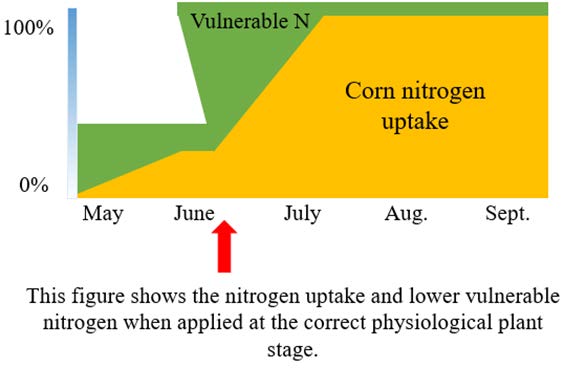Nitrogen is one of the most important nutrients utilized in today’s agronomic systems. Nitrogen is also one of the most volatile and dynamic nutrients in the environment.
Crop production in Nebraska often involves supplemental nitrogen being applied to soil already containing nitrogen. Fertilizer requirements are based on the expected corn yield and nutrient levels within soils. Proper soil sampling, manure testing, and accurate record keeping are key to creating a nitrogen management plan. By taking advantage of all available nitrogen credits, a producer saves money when not having to apply as much.
Timing of nitrogen application and the physiological stage of the plant can drive nitrogen uptake and loss. Spring soil conditions foster leaching, and denitrification (bacterial conversion of nitrates in the soil to gaseous or free atmospheric nitrogen). By utilizing a split application of nitrogen, you can reduce the amount that could be lost to volatilization or leaching. Applying the majority of your nitrogen as a sidedress application is recommended in primarily sandy soils.
The corn crop should be 10 to 20 inches high before application. This will increase the likelihood that nitrogen is taken up by the crop and not lost to denitrification or leaching.
When applying nitrogen, it is important to think of what stage the plant is in physiologically. By planning your nitrogen application according to the developmental stage of your corn crop, you can enhance uptake and decrease loss. When a corn plant is just emerging, nitrogen is not being taken up at a high rate. Using chemigation to apply nitrogen fertilizer allows producers to “spoon feed” it to crops when the plants need it most.
